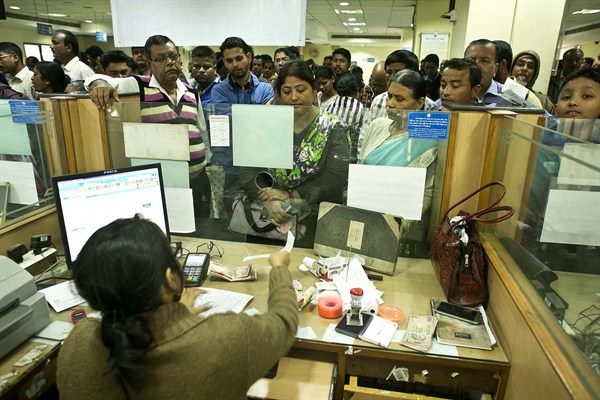On the last day of 2016, Indian Prime Minister Narendra Modi went on television with a New Year’s speech to address the most pressing issue on Indians’ mind: the sudden withdrawal less than two months earlier of most paper currency from circulation. He urged the Indian people to be patient and have faith, and told them to think of Mahatma Gandhi and his strategy of nonviolent resistance as they tried to endure the harsh challenge they now face.
Gandhi had called on Indians to resist British colonial forces. In the case of India’s cash crisis, the tribulations were inflicted by Modi himself. But much like the nation’s founding father, the prime minister argued that today’s suffering will pay off and bring redemption down the road. His controversial demonetization plan, he said, will rid the country of its crippling corruption and ultimately bring more economic growth and across-the-board prosperity.
Whether or not that is true will be one of the important questions facing India in 2017, and one with potentially important lessons for other countries.

